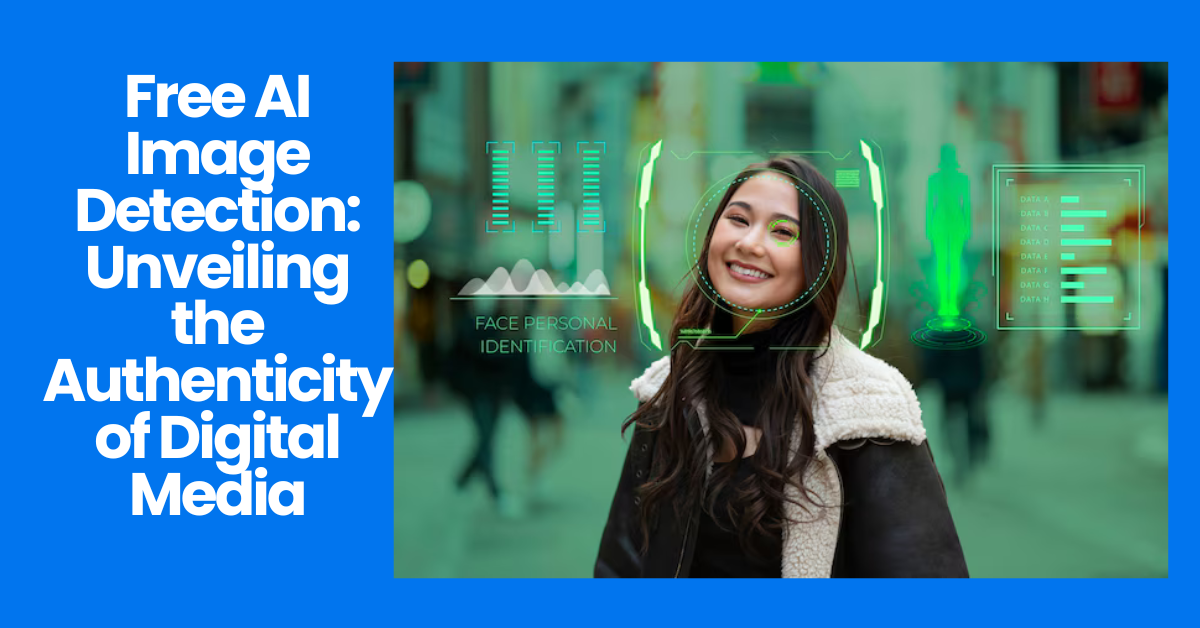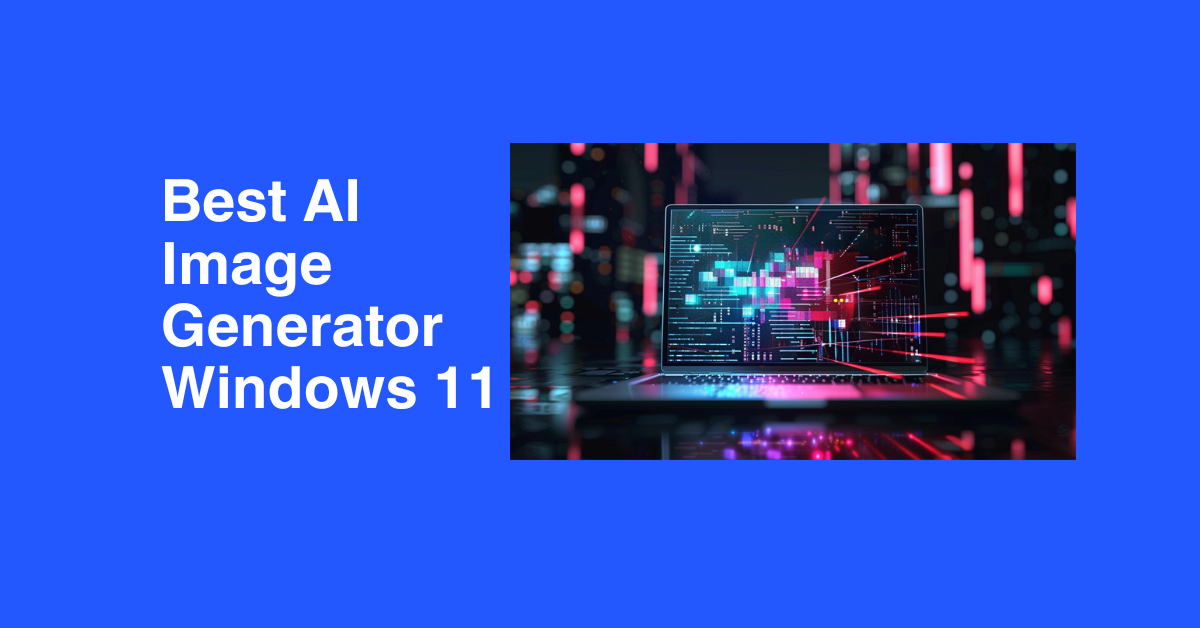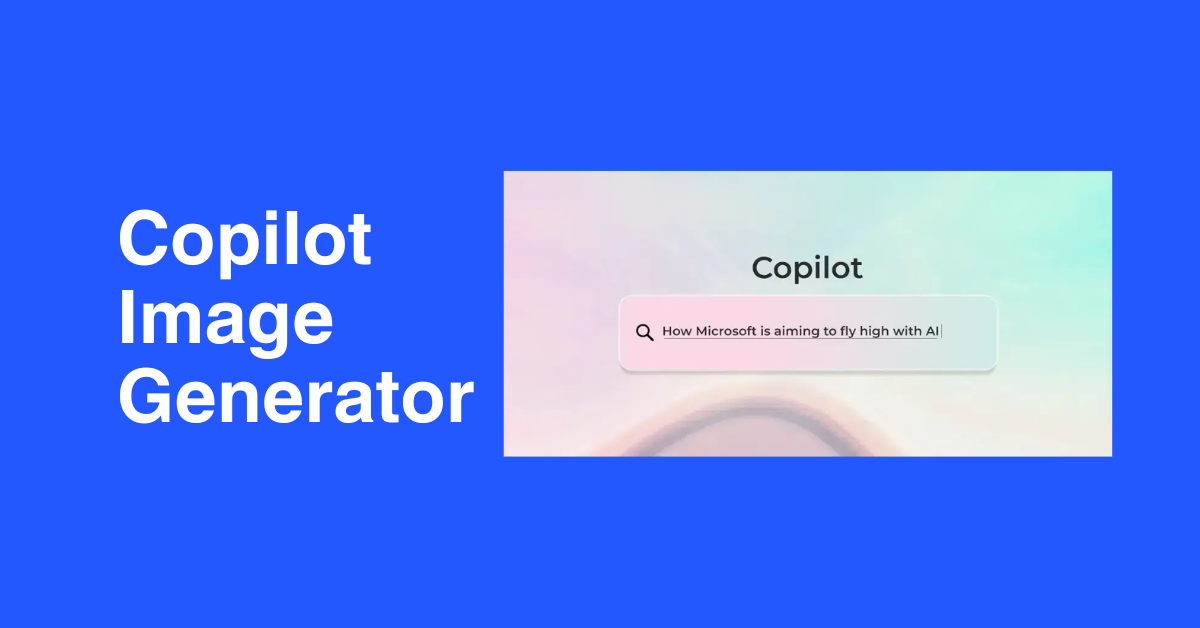
Detect AI Generated Images Free: Top Tools and Tips
- Image Generators
- November 7, 2024
- No Comments
In the digital age, the creation of images has reached unprecedented heights with the advent of artificial intelligence. While AI-generated images offer remarkable opportunities for creativity and innovation, they also pave the way for misinformation and deception. As the lines between genuine and artificially crafted visuals blur, it becomes imperative to equip ourselves with the knowledge and tools needed to detect AI generated images free of charge. This blog post will delve into various aspects of free AI image detection, providing an insightful guide on how to unveil the authenticity of digital media.
Free AI Image Detection: Unveiling the Authenticity of Digital Media

The necessity for free AI image detection tools is more pressing than ever. With the escalation of deepfake technology and the proliferation of manipulated images across social media platforms, discerning genuine content from fake has turned into a complex challenge. The implications of this deceit are profound, ranging from personal reputations being tarnished to larger societal impacts such as political misinformation.
Understanding how AI creates images involves recognizing the algorithms that generate them. These algorithms learn from vast datasets and mimic human-like creativity, resulting in stunning visual outputs. Yet, their rapid growth raises ethical concerns about authenticity and trust in visual media. In this section, we will explore the significance of detecting AI-generated images, how it impacts our perception of reality, and the free tools available to assist us in this endeavor.
The Importance of Detecting AI-Generated Images
As the technology behind AI-generated images advances, so does the need for effective detection methods. The consequences of failing to distinguish between real and fake can be severe. For individuals, this might mean falling victim to scams or misrepresented identities. For society as a whole, it could lead to the spread of disinformation during critical events such as elections or public health crises.
Moreover, the presence of AI-generated images challenges the essence of what it means to create art or capture moments authentically. By identifying these images, we not only protect ourselves but also preserve the integrity of artistic expression and factual storytelling. Thus, investing time in learning how to detect AI-generated images is crucial for fostering a more informed and discerning public.
Ethical Implications of AI Image Generation
The ethical landscape surrounding AI image generation is complex. On one hand, the technology offers groundbreaking potential for artists, marketers, and educators. On the other hand, it poses significant risks if misused. Questions arise regarding intellectual property rights, the authenticity of creative works, and the moral responsibility of those who produce and disseminate AI-generated content.
By focusing on free AI image detection, we empower individuals and organizations to navigate this landscape responsibly. Recognizing the authenticity of digital media helps uphold ethical standards in content creation and consumption. As users become more adept at spotting AI-generated imagery, the pressure on creators to disclose their use of AI tools will likely increase, fostering a culture of transparency.
Tools and Techniques for Detection
In response to the growing demand for verification, numerous tools and techniques have emerged to help users identify AI-generated images. From image analysis software to detailed guides on visual cues, a wealth of resources is now available for free. Leveraging these tools can significantly enhance our ability to discern the authenticity of digital media.
In the following sections, we will discuss various free AI image detection tools and techniques that anyone can use, making it easier to navigate the increasingly complex realm of digital imagery.
Detect AI Generated Images Free: A Guide to Free Tools and Techniques

With an understanding of the importance of detecting AI-generated images, it’s essential to familiarize ourselves with the tools and techniques available for this purpose. The internet is teeming with resources designed to help users spot the differences between authentic photographs and their AI-generated counterparts.
This section will provide an overview of some of the most effective and accessible free tools, alongside practical techniques that anyone can employ to enhance their image detection skills.
An Overview of Available Free Tools
There is a plethora of free online tools specifically designed for detecting AI generated images free. Many of these tools utilize advanced algorithms and machine learning techniques to analyze image data and assess its authenticity. Some popular options include:
- Deepware Scanner: An innovative tool that examines submitted images for signs of manipulation. It provides users with a straightforward interface and thorough results.
- Sensity AI: This platform specializes in identifying deepfake content within videos and images. Though primarily focused on video, many of its detection techniques apply equally to still images.
- PhotoForensics: A well-known tool that analyzes metadata and pixel-level inconsistencies to determine whether an image has been altered or created using AI.
Each of these tools comes equipped with unique features that cater to different detection needs. Exploring these options will reveal which tools best align with your specific requirements and preferences.
Techniques for Manual Detection
While software tools serve as an excellent resource for detecting AI-generated images, developing a keen eye for manual detection techniques can greatly enhance one’s capabilities. Familiarizing yourself with common characteristics of AI-generated content will enable you to critically assess any image you encounter.
Some key techniques include:
- Examining Lighting and Shadows: AI-generated images often struggle with accurately replicating natural lighting and shadows. Look for inconsistencies in shadow placement and light sources. Typically, artificial images exhibit unusual contrasts or overly uniform lighting.
- Analyzing Details and Textures: Another telltale sign of AI generation is the lack of fine details and textures. Observe areas that require intricate detail, such as hair, skin, or fabric. AI often fails to replicate these nuances convincingly.
- Identifying Imperfections: Genuine photographs frequently contain minor imperfections—like lens flares, noise, or grain. AI-generated images may appear “too perfect,” lacking the organic flaws characteristic of real-life photography.
By honing these manual detection techniques, users can become more discerning consumers of digital media, better equipped to question the authenticity of what they see.
Cross-Referencing Sources
When attempting to verify the authenticity of an image, one effective method is cross-referencing the image against reliable sources. Doing so enables users to gather additional context about the image, such as its origin, usage, and history.
Consider utilizing reputable image search engines like Google Images or TinEye. Upload the image or enter its URL to conduct a reverse image search. This process can reveal instances of the same image appearing elsewhere, leading to insights regarding its legitimacy. If the image is linked to multiple trustworthy sources, it is more likely to be authentic.
Cross-referencing facilitates a deeper understanding of the visual context, enabling users to make more informed decisions about the validity of the image in question.
Spotting the Difference: Free Resources for Detecting AI-Generated Images

Unraveling the intricacies of AI-generated images can feel overwhelming, particularly for those unfamiliar with the technology. Fortunately, a variety of resources exist to provide guidance and support in the detection process. This section highlights some of the most effective free resources available to help users spot the difference between real and AI-generated images.
Educational Platforms and Online Courses
Many educational platforms offer free courses and workshops tailored to enhancing digital literacy and understanding emerging technologies. Websites like Coursera, edX, and Khan Academy provide a range of courses that dive into AI, machine learning, and image recognition.
These courses often cover topics such as:
- The fundamentals of AI image generation.
- Recognizing the ethical implications of AI technology.
- Hands-on experience with tools for detecting AI-generated content.
Engaging with these educational materials not only empowers users with knowledge but also fosters a proactive approach to discerning visual integrity in a rapidly evolving digital landscape.
Community Forums and Discussion Groups
Another invaluable resource for staying informed about AI-generated image detection is community forums and discussion groups. Platforms like Reddit, Quora, and specialized forums focused on technology allow users to share experiences, insights, and best practices related to image detection.
Participating in discussions can yield several benefits:
- Access to firsthand accounts and tips from others who have faced similar challenges.
- Opportunities to pose questions and seek advice from knowledgeable individuals within the community.
- Shared updates on new tools and techniques for detecting AI-generated images.
The collective wisdom found within these communities serves as a powerful tool for expanding one’s understanding of digital media authenticity.
Blogs and Articles on AI Detection
Numerous blogs and articles dedicated to AI and digital media provide readers with an ongoing stream of information about the latest trends and developments in image detection. Following trusted sources and industry leaders can keep users informed about advancements in AI technology, newly released detection tools, and success stories.
Reading expert opinions and analyses can further enhance your understanding of the nuances involved in distinguishing AI-generated images from authentic ones. Engaging with quality content enables users to remain vigilant and informed as they navigate the complexities of the digital world.
Beyond the Human Eye: Free AI Image Detection Tools for Enhanced Accuracy
While human intuition and observation play significant roles in detecting AI-generated images, technology has paved the way for sophisticated tools that enhance accuracy and reliability. This section delves into the various free tools available for AI image detection, emphasizing their functionalities and how they can complement human efforts in discerning authenticity.
Machine Learning Algorithms in Image Detection
Machine learning algorithms form the backbone of many free AI image detection tools. These algorithms analyze vast amounts of data to identify patterns and anomalies that the human eye might miss. By training on both AI-generated and authentic images, these systems become adept at recognizing subtle distinctions, leading to more accurate results.
Common types of machine learning algorithms used in image detection include:
- Convolutional Neural Networks (CNNs): CNNs excel in image processing tasks and can effectively distinguish between authentic and AI-generated images by analyzing pixel arrangements and structures.
- Generative Adversarial Networks (GANs): GANs, initially developed for generating images, are also employed in detection by comparing input images against known AI-generated datasets.
Utilizing machine learning-based tools allows users to leverage cutting-edge technology for enhanced accuracy in identifying AI-created content.
Web-Based Detection Tools
A number of web-based platforms have emerged, allowing users to upload images and receive instant feedback regarding their authenticity. These tools typically feature user-friendly interfaces and provide results within seconds, making them accessible to individuals without extensive technical knowledge.
Prominent web-based detection tools include:
- Deepfake Detection Challenge: An initiative aimed at advancing technology in detecting deepfakes. It provides access to datasets and models that can be leveraged in creating detection tools.
- Microsoft’s Video Authenticator: Initially designed for deepfake video detection, this tool can also be adapted for still images by analyzing various attributes to assess authenticity.
By harnessing these web-based resources, users can quickly verify the authenticity of images while contributing to the broader fight against misinformation.
Mobile Applications for Detection
As smartphones continue to dominate our daily lives, mobile applications designed for AI image detection have gained traction. These applications empower users to analyze images on the go, increasing accessibility in evaluating the authenticity of digital content.
Some noteworthy mobile applications include:
- Truepic: Known for ensuring image integrity, Truepic verifies images’ provenance by tracing their origins and analyzing metadata.
- FactCheck App: Designed to combat misinformation, this app allows users to submit images for verification through a collaborative network of journalists and fact-checkers.
The rise of mobile applications signifies a shift toward democratizing access to AI image detection tools, allowing a wider audience to engage in verifying digital media.
Demystifying Deepfakes: Free Tools for Detecting AI-Generated Images
Deepfakes represent one of the most concerning manifestations of AI-generated imagery. By manipulating audio and video, deepfakes can create realistic yet entirely fabricated media that can mislead viewers and distort reality. To combat this phenomenon, various free tools have emerged, specifically designed to detect deepfakes, thereby helping users discern AI-generated images more effectively.
Understanding Deepfakes
Deepfakes use advanced machine learning techniques, particularly Generative Adversarial Networks (GANs), to create hyper-realistic depictions of people. These creations can be benign, such as humorous video edits, or malicious, facilitating misinformation campaigns or defamation.
To safeguard against such misuse, it’s essential to understand the process behind deepfakes and become familiar with tools designed to identify them.
Specialized Detection Tools for Deepfakes
Several specialized tools have been developed to target deepfakes explicitly. These tools employ sophisticated algorithms to analyze audio-visual discrepancies indicative of manipulation. Some notable options include:
- Sensity AI: As mentioned earlier, Sensity AI specializes in detecting deepfake content by analyzing various elements of audiovisual files.
- Deepware Scanner: This scanner is accessible online and focuses primarily on identifying deepfake images and videos. Its easy-to-use interface makes it suitable for users of all skill levels.
- Reality Defender: This tool employs a combination of human expertise and machine learning to determine the authenticity of media. It provides users with insights into the likelihood of an image being manipulated.
By leveraging these specialized tools, users can more effectively recognize deepfakes amidst a sea of digital content, thus bolstering their ability to discern authenticity.
The Role of Social Media and User Responsibility
Social media platforms play a pivotal role in the spread of deepfakes, necessitating a collective effort to mitigate the impact of misleading content. Users must remain vigilant and encourage responsible sharing practices within their networks.
When encountering potentially dubious content, consider employing the various detection tools discussed to verify its authenticity before sharing. Additionally, advocating for improved content moderation and transparency from social media companies can foster a safer digital environment.
Ultimately, combating deepfakes requires a concerted effort from technology developers, social media platforms, and individual users alike.
Free AI Image Detection: A Beginner’s Guide to Verifying Digital Content
For those just starting their journey into the world of AI image detection, it can be daunting to navigate the myriad tools and resources available. However, by breaking down the process into manageable steps, beginners can develop the skills needed to identify AI-generated images confidently.
Getting Started with Detection
Begin your journey by familiarizing yourself with the concepts surrounding AI-generated images and the technology that powers them. Understanding the basics of machine learning and image generation will provide context for the tools you will use.
Consider exploring introductory tutorials or beginner’s guides on websites such as YouTube or Medium. These platforms host a wealth of educational content that can demystify AI-generated imagery while offering practical advice for detection.
Utilizing Free Tools and Resources
Start experimenting with the free tools discussed in previous sections. Upload images for analysis and familiarize yourself with their interfaces and functionalities. Take notes on the feedback provided by each tool, and pay close attention to common patterns that emerge during the evaluation process.
It’s advisable to practice with a mix of known authentic images and AI-generated examples. Using sample datasets or publicly available images can help develop your analytical skills without the pressure of assessing real-world scenarios.
Engaging with Communities and Continued Learning
As you grow more comfortable with the basic tools and techniques, actively engage with online communities dedicated to AI detection. Forums and discussion groups provide opportunities for networking with others interested in the topic, sharing insights, and seeking help when needed.
Continued learning is essential in keeping up with advancements in AI technology. Follow relevant blogs, subscribe to newsletters, and participate in webinars to stay informed about new detection methods and tools.
Through consistent practice and engagement with the community, beginners can transform into proficient detectors of AI-generated images.
Free AI Image Detection: Ensuring Authenticity in a Digital World
Ensuring authenticity in a digital world increasingly dominated by AI-generated images is paramount. With the prevalence of misinformation and manipulated content, individuals and organizations must adopt proactive strategies to discern the veracity of visual media.
Cultivating a Mindset of Critical Thinking
One of the most valuable skills in today’s digital landscape is critical thinking. Rather than accepting digital content at face value, cultivate a habit of questioning the authenticity of what you encounter. Ask yourself:
- Who created this image?
- What is the context behind it?
- Are there any visible signs indicating manipulation?
By developing a critical mindset, individuals can navigate the complexities of digital media more effectively and avoid falling prey to deceptive content.
Promoting Digital Literacy
Digital literacy is essential in our technology-driven world. By promoting digital literacy initiatives within schools, communities, and workplaces, we can equip individuals with the skills to assess the authenticity of media critically.
Encouraging programs that teach users about the implications of AI-generated content, ethical considerations, and practical detection techniques will foster a more informed populace.
Advocating for Responsible Technology Use
As technology continues to evolve, advocates for responsible technology use must emerge. This includes urging tech companies to implement stronger safeguards against the dissemination of misleading content.
Encourage platforms to invest in advanced detection technologies and implement stricter policies for addressing harmful or deceptive media. Urge stakeholders to prioritize transparency in their operations, ensuring that users remain informed about the authenticity of the content they consume.
By uniting in advocacy efforts, we can work toward creating a digital ecosystem that values authenticity and integrity.
Unlocking the Truth: Free Tools for Detecting AI-Generated Images
In a world where AI-generated images are becoming increasingly prevalent, unlocking the truth and verifying the authenticity of digital content is vital. This section focuses on the array of free tools available for AI image detection, empowering users to uncover the reality behind the visuals they encounter.
Comprehensive Toolkits for Detection
Many free AI image detection tools provide comprehensive features that streamline the verification process. Users can benefit from all-in-one solutions that combine various detection techniques, enabling them to analyze images more effectively.
Examples of such toolkits include:
- Google Cloud Vision API: While primarily designed for image classification, this tool can provide insights into image content and flag potential anomalies associated with AI-generated images.
- ImageMagick: A command-line tool that allows users to manipulate and analyze images. This flexibility enables in-depth examination of images, revealing hidden details that may indicate manipulation.
These comprehensive toolkits provide users with the necessary resources to enhance their image detection capabilities, empowering them to engage with digital media confidently.
Integrating AI Detection into Daily Practices
Integrating AI image detection into daily practices can significantly bolster one’s ability to discern authenticity. Encourage colleagues, friends, and family to incorporate detection tools into their media-sharing habits.
Establishing a culture of verification ensures that authenticity becomes a priority, creating a ripple effect in the broader community. Share your newfound knowledge and encourage open discussions about the challenges posed by AI-generated content.
Incorporating detection practices into everyday routines cultivates a more vigilant and discerning audience, reducing susceptibility to misleading content.
Staying Informed About Emerging Technologies
The landscape of AI image detection is constantly evolving. Staying updated about emerging technologies and advancements is crucial for maintaining a competitive edge in verifying digital content.
Follow reputable news sources, tech blogs, and industry conferences to discover the latest developments and innovations in AI and image detection.
Taking a proactive approach to staying informed empowers users to adapt and refine their detection strategies, ensuring their skills remain relevant in an ever-changing digital landscape.
Combatting Misinformation: Free AI Image Detection Tools for Enhanced Trust
Combatting misinformation in the digital age requires a collective effort and an emphasis on trustworthiness. The proliferation of AI-generated images complicates this challenge, but free AI image detection tools offer promising solutions for enhancing trust in digital media.
The Role of Collaboration in Verification
Collaboration among individuals, organizations, and technology developers plays a central role in combating misinformation. By pooling resources and knowledge, stakeholders can enhance the effectiveness of misinformation detection strategies.
Consider forming partnerships with local educational institutions, non-profits, or media outlets to promote awareness and provide training sessions on AI image detection. These collaborations encourage shared responsibility and empower communities to take action against misinformation.
Engaging with Fact-Checking Organizations
Fact-checking organizations play an essential role in promoting accurate information and combating misinformation. By collaborating with these organizations and utilizing their resources, individuals can amplify their efforts in identifying AI-generated images.
Many fact-checking organizations maintain databases of verified information and provide guidelines for detecting manipulated content. Engaging with these entities strengthens the overall integrity of media consumption and encourages responsible sharing practices.
Leverage the expertise of these organizations to enhance your own understanding of AI image detection, contributing to a more informed public.
Building Trust in Digital Media
Trust is paramount in the digital age. To foster an environment of trust, it is crucial to promote transparency in content creation and distribution. Encourage creators to disclose their use of AI tools and emphasize the importance of accurate representation in digital media.
As audiences become more educated about AI image detection, they will develop a greater appreciation for authenticity and the ethical considerations surrounding digital content. This cultural shift will ultimately contribute to building a more trustworthy digital landscape.
Free AI Image Detection: A Comprehensive Guide to Verifying Digital Content
In conclusion, navigating the complexities of AI-generated images requires a comprehensive understanding of the tools, techniques, and strategies available for detection. This guide has outlined various aspects of free AI image detection, empowering individuals to verify digital content confidently.
Recap of Key Points
- Understanding the Importance: Recognizing the significance of detecting AI-generated images is crucial for fostering informed decision-making and maintaining the integrity of digital media.
- Exploring Free Tools: Numerous free tools and resources are available for detecting AI-generated content, enabling users to analyze images and identify discrepancies.
- Cultivating Skills: Developing critical thinking skills and engaging with educational resources enhances one’s ability to discern authenticity in digital imagery.
- Advocating for Transparency: Encouraging responsible technology use and promoting transparency in content creation fosters a culture of trust and integrity.
Embracing the Future of Digital Media
As technology continues to evolve, the landscape of digital media will undoubtedly transform. By embracing the tools and techniques discussed throughout this guide, individuals can proactively navigate the complexities of AI-generated images.
Equipped with knowledge and resources, users can contribute to a more informed and discerning audience, combatting misinformation and preserving the authenticity of digital content.
As we move forward into an increasingly AI-driven world, the ability to detect AI-generated images will remain a vital skill, ensuring we remain vigilant and engaged participants in shaping the future of digital media.
Conclusion
In a world saturated with digital images, distinguishing between authentic and AI-generated content is more critical than ever. This comprehensive blog post has explored the various facets of detecting AI generated images free, equipping readers with the tools, techniques, and resources necessary to verify digital content effectively.
As we continue to navigate a technology-driven future, the power to discern authenticity rests in our hands. By cultivating critical thinking skills, engaging with educational resources, and utilizing free detection tools, we can foster a culture of trust and integrity in digital media. Ultimately, our commitment to verifying the authenticity of images will pave the way for a more informed and discerning society, capable of overcoming the challenges posed by AI-generated imagery.
Looking to learn more? Dive into our related article for in-depth insights into the Best Tools For Image Generation. Plus, discover more in our latest blog post on FM Stadium Image Generator . Keep exploring with us!
Related Tools:
Image Generation Tools
Video Generators
Productivity Tools
Design Generation Tools
Music Generation Tools





